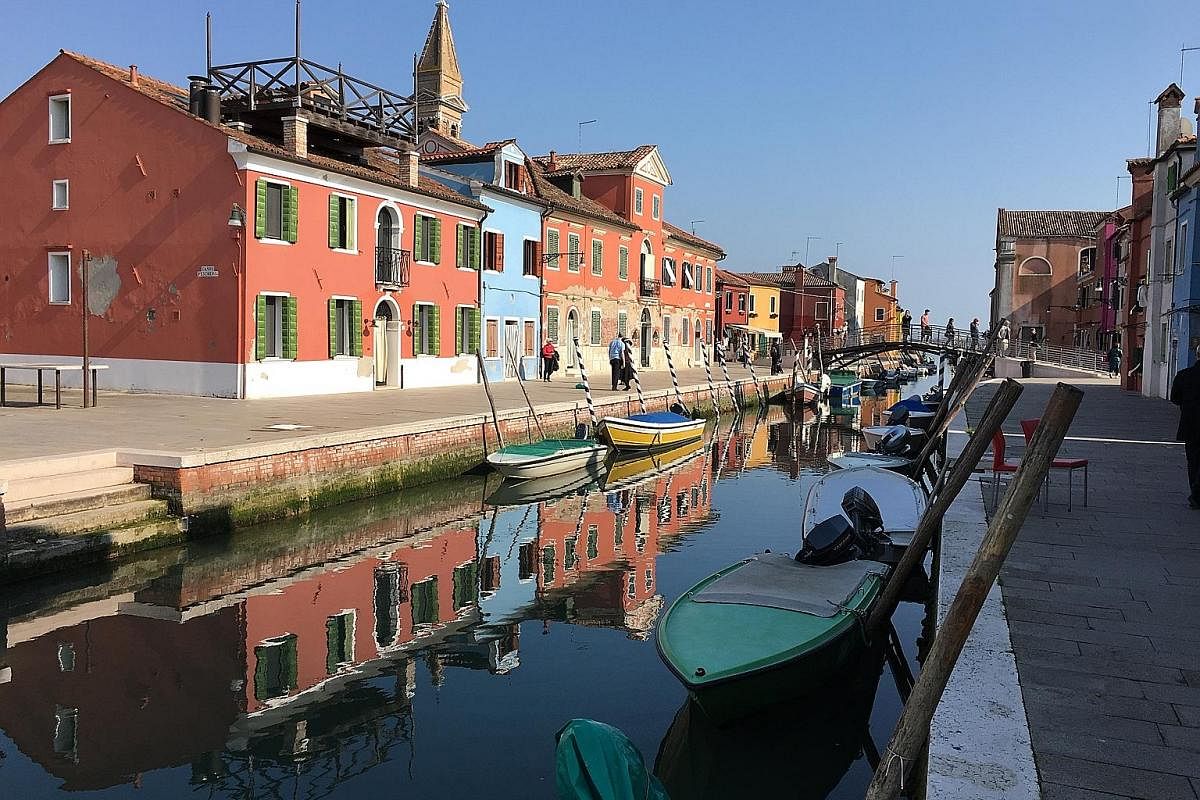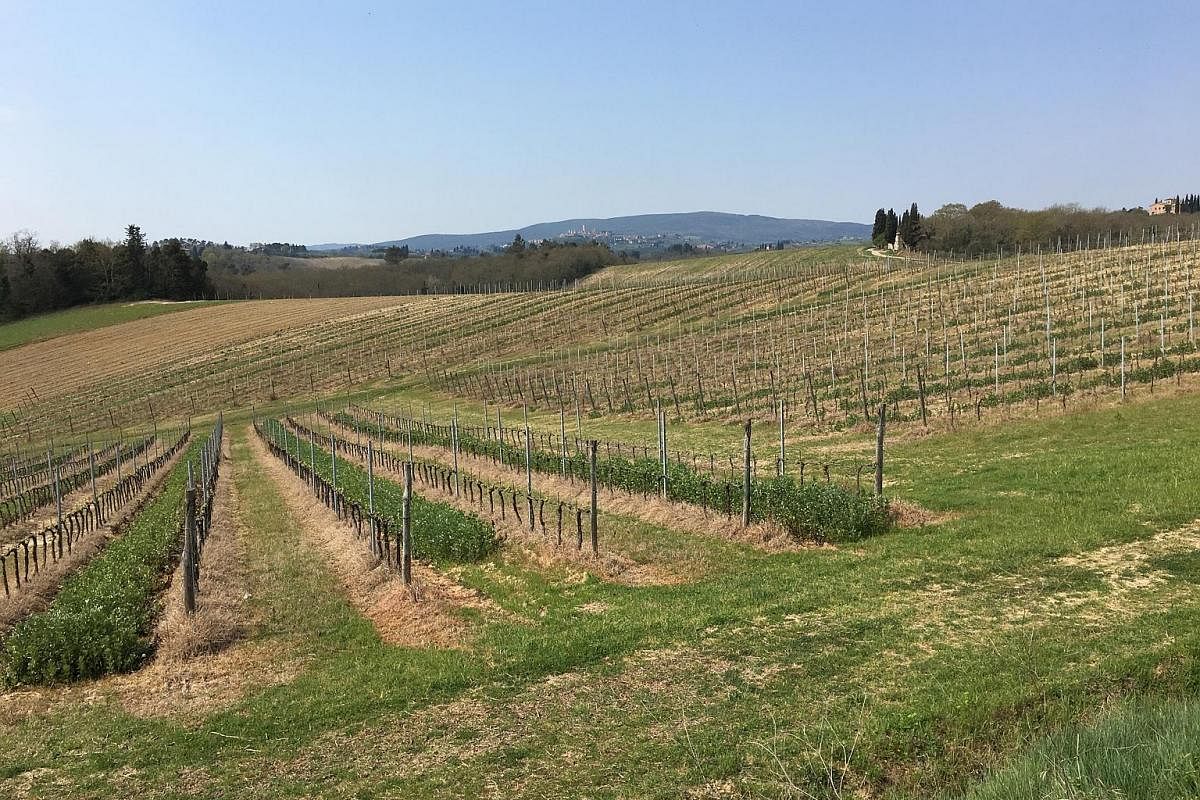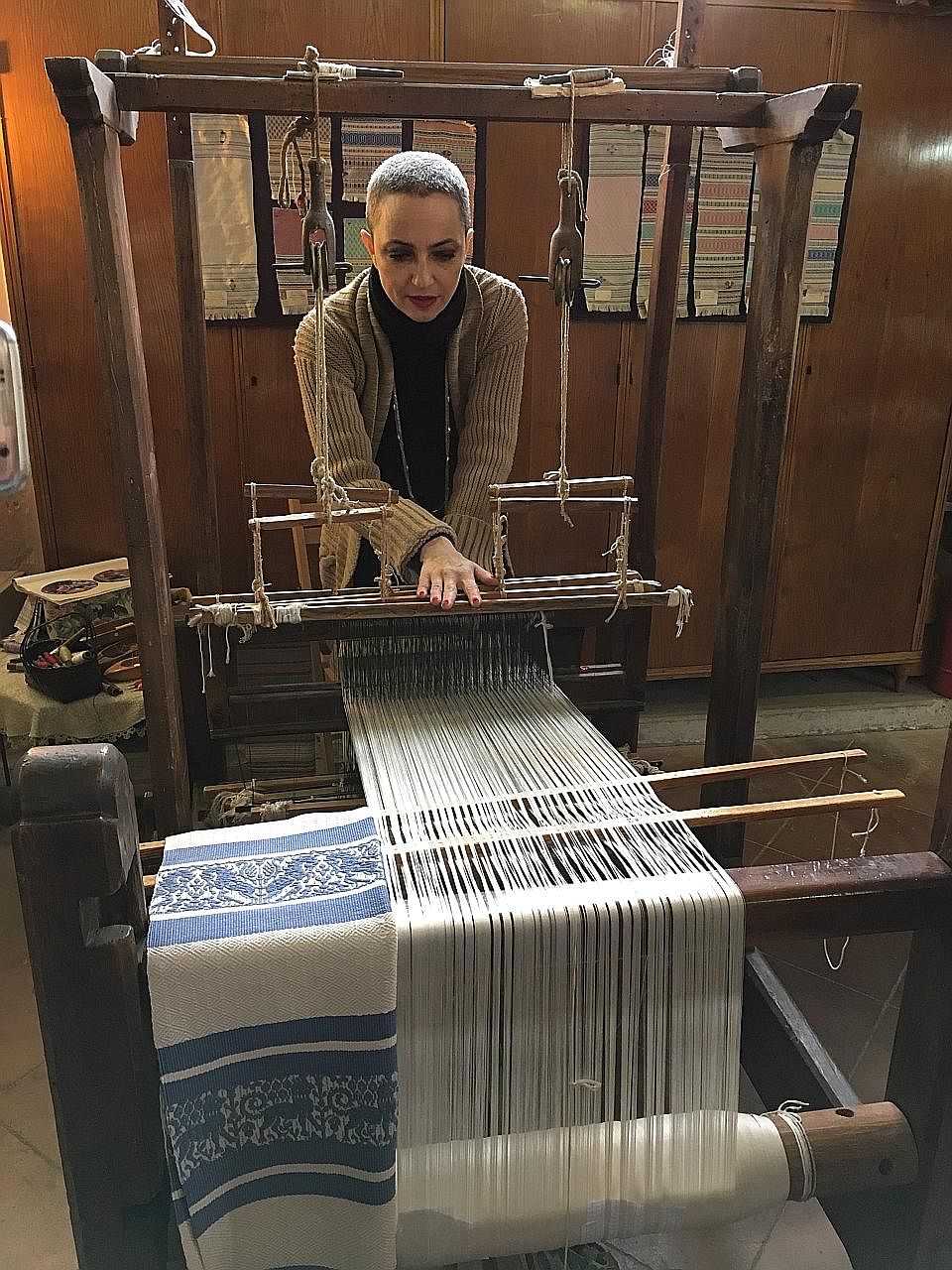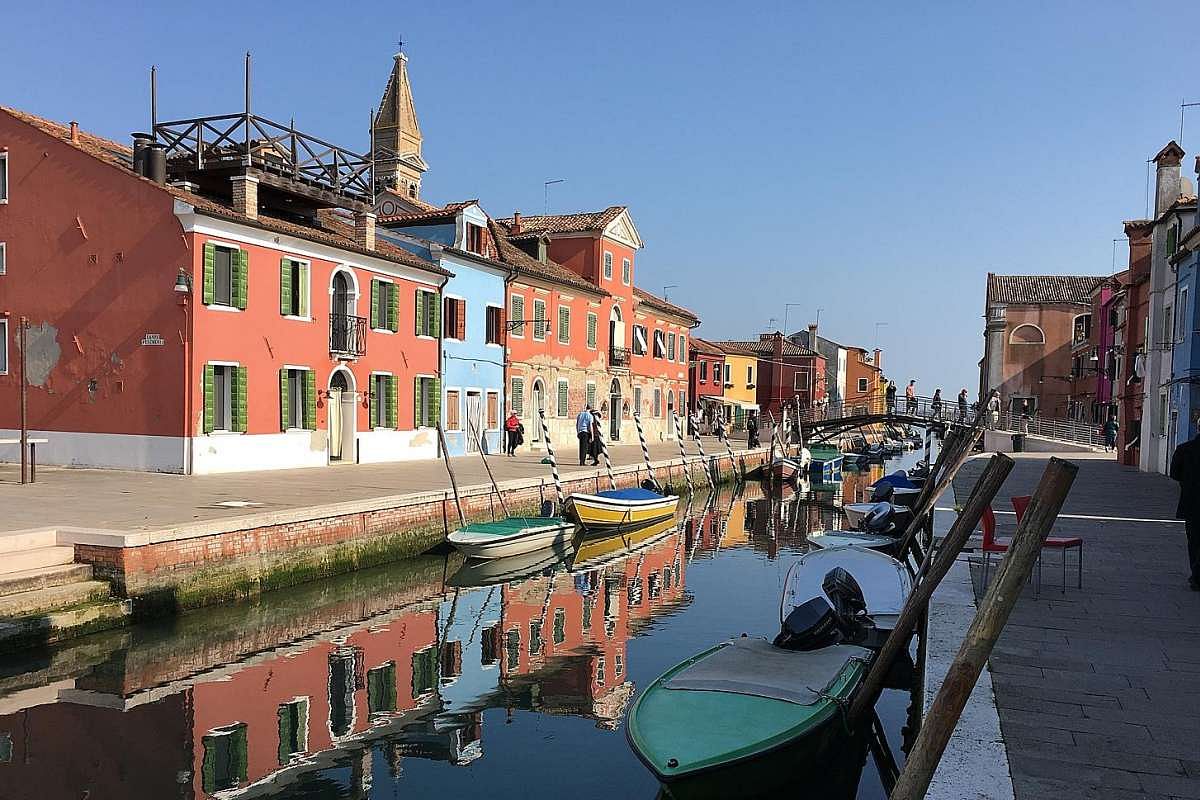-
GETTING THERE
-
I take Etihad Airways from Singapore to Rome, with a transit in Abu Dhabi.
For the flight home, I fly from Munich, again with Etihad Airways, and transit in Abu Dhabi.
It is a 11/2-hour coach ride from Salzburg to Munich.
-
TRAVEL TIPS
-
• Photo buffs visiting Siena can get a panoramic shot of Piazza del Campo's iconic shell-shaped plaza by paying €10 (S$15.40) to climb Torre del Mangia, or Tower of Mangia.
• While I had the good fortune of going on a taxi boat cruise down Venice's Grand Canal, those who do not wish to splurge €70 or more can get a similar experience by paying €7.50 for a ride on the water bus. Just stand at the front for an unobstructed view of what some call the world's most beautiful street.
• Gelato lovers who visit San Gimignano must try Gelateria Dondoli, twice named the gelato world champion. The shop offers a flavour called Michelle, named after former United States first lady Michelle Obama. She was scheduled to visit the town during 2014 and the gelato containing orange, fig and honey was made in her honour. A change in her travel schedule meant she did not make the visit, but owner Sergio Dondoli says "the gelato is always here, ready for her".
Off the tourist track in Italy
Visit sprawling family estates in sunny Tuscany, a weaving workshop housed in a 13th-century church and a quaint nunnery in the foothills of Austria


In the Italian city of Perugia, about a two-hour drive north of Rome, stands a 13th-century church that has long ceased to be a place of worship.
These days, instead of prayers and religious hymns, methodical clanks of weaving machines at work echo around its high ceiling.
Seated at one of the 18th- and 19th-century wooden looms is Ms Marta Cucchia, her hands and feet manipulating the levers and pedals with a speed and precision that comes from decades of practice.
Layer by layer, she spins an intricate pattern of red, green and blue thread into a table runner - measuring about 80cm by 30cm - that will take three days to produce. It will then be displayed for sale at €75 (S$116) in an area of the church converted into a showroom of beautiful fabrics sporting mediaeval and Renaissance designs.
This was not supposed to be her life. In the early 1990s, Ms Cucchia was studying interior design in Milan. Her family owned the weaving business, but she did not pick up the trade until she decided to try her hand at weaving when she was back home during one of her school holidays.
"Big mistake, I fell in love," she says with a shrug.

Giuditta Brozzetti (www.brozzetti.com), equal parts workshop and museum, is but one of the labours of love I encounter during my week-long trip to Italy in April.
Organised by Trafalgar Tours to showcase its support for local entrepreneurs, the trip focuses on unique businesses such as wineries and restaurants not on the usual tourist's track. It takes me from sprawling family estates in sunny Tuscany to a quaint nunnery in the foothills of Austria.
First, in the Italian capital, I have a delicious dinner on Tiber Island, a tiny landmass on the Tiber River that runs through the Eternal City.
Over a meal of burrata cheese, veal and ravioli, chef Fabio Bongianni recounts how he was an attorney before giving it up to pursue his love of cooking.
These days, he conducts cooking classes (www.fabiolouscookingday.it), some of which are held in his apartment on Tiber Island.
But Italian cuisine is not the only highlight at his place. I have a welcome drink before dinner in the basement, where part of the floor is made of see-through plexiglass to reveal the ancient bricks and foundation that date back to Roman times.
Over in Tuscany, it is the same story at the family-owned Fattoria di Petroio vineyard and olive farm (www.fattoriapetroio.it).
Ms Diana Lenzi majored in politics in university, but took up her father's offer to run the family estate in 2008 upon graduation, and seems almost relieved she made that choice.
"Italian politics, what was I thinking?" she says with a smile.
To ensure quality, the vineyard produces 35,000 bottles of wines a year, despite having the capacity to churn out up to 70,000.
Ms Lenzi's father Gian Luigi inherited the 15ha farm in 1961, but started breathing new life into the business after he met his wife Pamela in the 1970s.
The couple spent 25 years gradually replanting vines and installing better cellars, all while Mr Lenzi juggled a career in neurology.
These days, with his daughter running the show, he has more time to kick back with a glass of his own Chianti.
TRADITION AND HISTORY

Besides the countryside charm of vineyards, Tuscany is also home to the mediaeval city of Siena, which is divided into 17 districts, or contrade.
Each district is named after an animal or symbol (eagle, unicorn, tower and so on), and on the streets, little markers bearing images of the mascots denote where one territory ends and another begins.
"You can change your job, your name, even your wife. Why not? But you can never change your contrada. Never," one local tells me.
Twice a year, the districts duke it out in a horse race known as the Palio, which has been taking place for about 400 years.
The central square, Piazza del Campo, is converted into a race track and jockeys ride their horses bareback, wearing their district colours as thousands of spectators squeeze into the area to cheer them on.
Such a deep sense of identity also permeates Guicciardini Strozzi wine estate (www.guicciardinistrozzi.it), which stretches over 530ha near San Gimignano.
The Strozzi sisters, who run the place, belong to a clan that was once a rival of the renowned Medici family, which wielded vast influence through great wealth in Florence during the Renaissance.
"The difference is, we are still here and they don't exist anymore," says older sister Natalia with a wide grin.
I take a ride on a golf cart through undulating hills of vines in neat rows. In other areas, visitors can hunt pheasants and other fowl, or pick prized truffles in autumn and winter.
Ms Strozzi and her sister Irina are also minor celebrities, thanks to an ancestor who is believed to have posed for Leonardo da Vinci's most famous painting.
Photos of the sisters standing beside reproductions of the Mona Lisa decorate the walls of the winetasting room.
The estate - which Trafalgar will add to its choice of destinations next year - produces a variety of wines, including a white wine from the vernaccia grape, which San Gimignano is known for.
The Strozzis' Cusona 1933 vernaccia white wine gained a certain degree of fame when it was served on Pope Francis' flight to Mexico for his visit there in February last year.
SECOND TIME'S THE CHARM

My first trip to Italy was in 2015 and I visited four of the places that I would also go to this time round - Rome, Siena, San Gimignano and Venice.
On my second trip in two years, things are familiar, yet not stale.
Many travellers have found that Italy holds up well to - and even rewards - multiple visits and I am discovering that for myself.
In Siena, I go up the Torre del Mangia (admission: €10), or Tower of Mangia, that overlooks Piazza del Campo. The dark and cramped stairwell is a challenge and I press myself against the wall of the tower more than once to make way for people coming down. But the effort is worth it as I reach the top and take in commanding views of the mediaeval architecture below.
And though it is my second time to Rome, it is my first time seeing the Trevi Fountain with water running through it. Two years ago, the pool of the fountain had been drained to set up unsightly construction platforms for restoration works.
Now, the statues adorning the fountain have been scrubbed white and its surroundings are packed with tourists tossing coins over their shoulders into the water for good luck.
Similarly, in Venice, I get to take in St Mark's Basilica and its bell tower in their full glory, their scaffolding having been recently removed.
I thought I had covered most of what the Floating City had to offer the first time round. But I had somehow missed Burano, a neighbourhood of brightly coloured houses about an hour's boat ride from Venice's city centre.
If the typical mass of people at Piazza San Marco is too overwhelming, then Burano might just be for you. Here, I enjoy the picturesque canals running alongside rows of cheery shops and restaurants, without throngs of tourists.
NUNNERY IN THE MOUNTAINS

My trip ends with a visit to a nunnery in Austria called Kloster Wernberg (www.klosterwernberg.at), where about 60 nuns live in a castle overlooking mountains and a river. It is near the city of Villach, which is close to the Austria-Italy border.
The monastery hosts visitors, such as hikers who drop by for lunch, and maintains a guesthouse for those who stay longer. Naturally, in this house of God, travellers can approach the nuns for spiritual advice as well.
Fans of the evergreen classic The Sound Of Music are in for a treat as the stop in Salzburg features a stay at an 18th-century estate that gave life to many iconic scenes in the 1965 film.
Called the Schloss Leopoldskron (www.schloss-leopoldskron.com), the stately manor is now a hotel. Its grounds, overlooking a tranquil lake, were where the outdoor scenes of the Von Trapp family mansion were filmed.
I duly get a photo beside the twin merhorse statues - which make frequent appearances in the movie - on the edge of the waters that reflect a majestic mountain range in the distance.
By that point, I have been on the road for seven days, having travelled about 1,000km by bus. But the journey has been comfortable and filled with magnificent sights as well as unforgettable stories of the people I met.
Besides these precious memories, it is also the first time I return from a vacation with a bottle of wine fit for the Pope.
• The trip was sponsored by Trafalgar Tours (www.trafalgar.com).
Join ST's Telegram channel and get the latest breaking news delivered to you.
A version of this article appeared in the print edition of The Sunday Times on June 18, 2017, with the headline Off the tourist track in Italy. Subscribe


